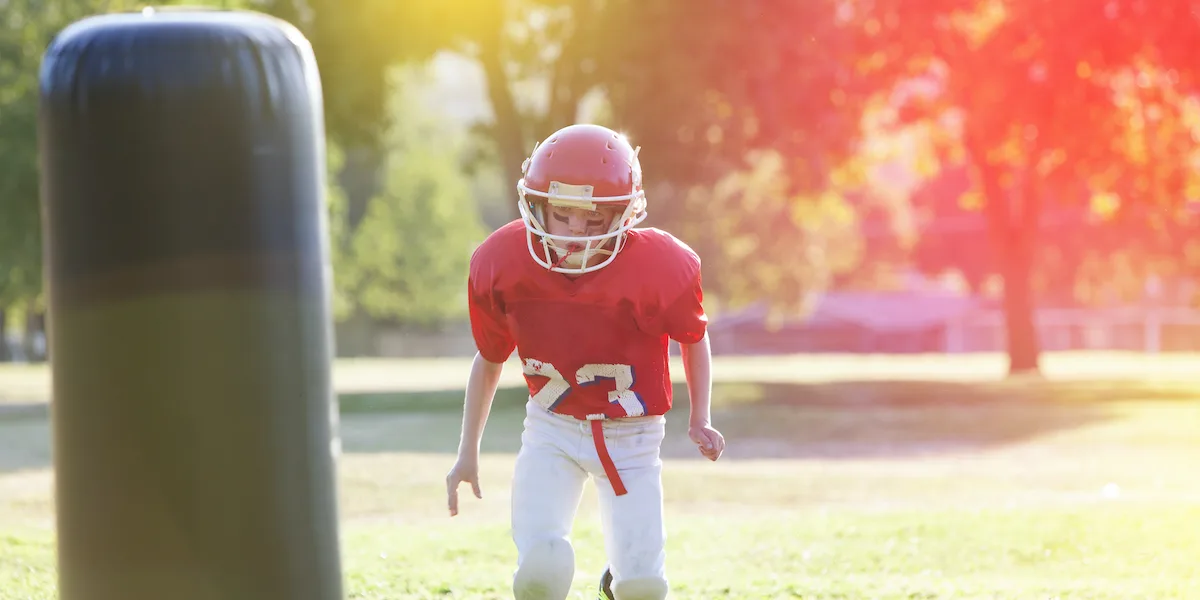
Keeping young football players excited throughout the season can be a tough task. If your weekly drills get repetitive, players will get bored, lose focus, and stop improving.
The key to keeping drills exciting for young players is making sure the drills are challenging and include competition. You should also focus on practicing techniques that transfer to in-game situations.
Regardless of the age of your youth football team, or whether you play flag or tackle football, use these four fun defensive drills to keep players engaged throughout the season.
Fumble Force & Recovery Drill
Taking care of the football is one of the biggest determining factors in your team's win/loss record. In the 2019 NFL Season the top 7 teams in turnover differential all made the playoffs, including the Super Bowl Champion Kansas City Chiefs. Place an emphasis on taking care of the football on offense, and forcing turnovers on defense at each practice.
Forced Fumble & Recovery Drills can be a great warmup at the beginning of practice to get all of your players involved. Keep players moving rather than standing in line and waiting for their turn.
Several coaches can participate in the drill so that you have several "live balls" moving at once.
You can also insert a bit of competition into the drill by rewarding players our groups that recover fumbles cleanly. Make sure players are encouraged to fall on the ball - or at least make absolutely certain they'll recover the ball - rather than trying to scoop the ball and run with it.
Tip Drill for Youth Football
Don't reinvent the wheel. The Tip Drill might be the most well known defensive drill for teams of all ages - from flag football to the NFL. Primarily used for defensive backs, you can also get your defensive line or linebackers involved with different variations of the drill.
The Tip Drill can also be adjusted each practice. One practice you can focus on tipped balls at the line of scrimmage, and adjust to deep passes in your next practice.
1v1 Pass Rush Drill
A strong pass rusher can be the second most important position on the field behind quarterback. Working on pass rush skills at your youth football practice will go a long way throughout your season.
Since most of your players will play offense and defense, you can kill two birds with one stone with the 1v1 Pass Rush Drill. One player lines up as a defensive lineman and one as an offensive lineman. The offensive lineman mimics pass blocking during a game to prevent the defensive lineman from reaching the quarterback within a set timeframe (for example, 5 seconds).
Continue rotating players through the drill so each player gets practice at each position - even if it's not their regular position during the game. You can also use two offensive linemen and two defensive linemen at the same time to get four players active at once.
Instead of beating the offensive lineman to a tackling dummy, you can spice things up by rolling out a loose ball for defensive linemen to recover occasionally. Give the offensive and defensive player the opportunity to recover the fumble to add in some extra competition.
Shuffle, Pedal, Angle Drill
Proper fundamentals are critical at any level. Teaching technique to young players can help improve immediate performance, but also sets your players up for success in future seasons or at the high school level.
Variations of the Shuffle, Pedal, Angle Drill are used from youth football all the way into the pros. The drill offers a great opportunity for 1-on-1 coaching and for less skilled players to learn proper technique from your more experienced players.
You can also add in a live ball at the end for players to recover or catch to keep things interesting.
Looking to take your training to the next level? Take the NASM CPT free practice test.
Quick Tips for Running Youth Football Defensive Drills During Practice
Finding the proper balance between fun and productivity is critical for football coaches, particularly at the youth level.
Keep drills to 10 minutes at minimum, and make minor changes to each drill each week to keep things interesting. Insert small competitions into as many drills as possible to build an exciting atmosphere at practice and generate more camaraderie among your players.